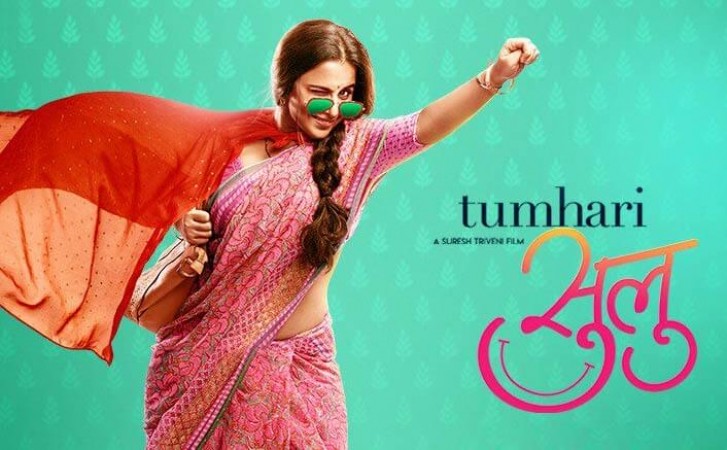
"Tumhari Sulu" is a singular and outstanding example of digital cinematography in an era where films are typically produced in high-definition digital formats for ease of use. The 2017 release of this Indian movie, which was directed by Suresh Triveni, was made using the uncommon 35mm film format. The decision to shoot "Tumhari Sulu" in 35mm format not only adds a distinct charm but also begs the question of why this was done in an era where digital filmmaking has taken over. The motivations behind this unusual choice will be discussed in detail in this article, along with how it enhanced the overall cinematic appeal of the picture.
It is crucial to comprehend the historical background and current status of the 35mm film format before delving into the specifics of "Tumhari Sulu." Since it was first introduced in the late 19th century, the 35mm format has a long and illustrious history. It continued to be the industry standard for recording motion pictures for many years, appearing on silver screens all over the world. But with the arrival of digital technology, the filmmaking sector underwent a paradigm shift at the start of the twenty-first century. The use of 35mm film gradually decreased as filmmakers adopted digital cameras for their convenience, economy, and versatility.
Shooting on film has become rare in this digital age and is typically only done by auteurs and filmmakers who are looking for a particular aesthetic. The 35mm format appeared to be almost obsolete due to the popularity of digital cameras, which is why "Tumhari Sulu" shooting on film attracted a lot of attention.
The visual and emotional resonance that 35mm film provided was one of the main factors in the decision to use it for "Tumhari Sulu" Sulochana (Vidya Balan), a middle-class housewife who unintentionally discovers her talent as a radio jockey, is the focus of the movie's plot. The narrative takes the reader on a touching journey of personal growth, dreams, and empowerment. The directors thought that using 35mm film would deepen the story's emotional impact.
Digital formats frequently struggle to reproduce the unique grain structure and texture of 35mm film. It enhances the visuals with a layer of nostalgia and authenticity that fits in perfectly with the Mumbai setting and realistic portrayal of daily life in the movie. Warm colours and a tactile feel to the film stock help evoke a feeling of familiarity and nostalgia, which helps the audience empathise more with the characters and their circumstances.
The movie's visually arresting sequences were created by cinematographer Saurabh Goswami, who claimed that using film allowed him to better capture Vidya Balan's performance's subtleties than digital. The film's emotional resonance was significantly aided by the format's ability to capture delicate facial expressions and small details.
There are difficulties involved in shooting on 35mm film. It calls for careful preparation, dexterity, and a dedication to excellence. Each film shot requires spending money for film stock, processing, and post-production, in contrast to digital cameras that allow for multiple takes with little financial impact. The crew must possess a high level of expertise and discipline due to the small margin for error.
It is admirable that the "Tumhari Sulu" team is committed to using 35mm film. They were conscious of the difficulties but felt that the advantages in terms of visual storytelling outweighed the drawbacks. The final product demonstrated the richness and depth that 35mm film can provide, demonstrating the dedication to upholding the integrity of the film format.
The ability of 35mm film to capture Mumbai's vibrant and diverse landscape was another important factor that influenced the decision. Mumbai, with its busy streets, jam-packed local trains, and picturesque seafront, has a unique character in "Tumhari Sulu." In a way that digital photography could not, using film as a medium allowed the cinematographer to capture the essence of the city.
Amazing visuals that displayed both the beauty and chaos of the city were made possible by the texture and dynamic range of 35mm film. The storytelling was given a special visual appeal by the film format, whether it was the cramped streets of a chawl (a typical Indian housing complex) or the frantic traffic of Mumbai's streets.
"Tumhari Sulu" stood out as a tribute to the bygone era of celluloid in an age where most films are shot digitally and watched on high-definition screens. Audiences and cinephiles both showed interest in this film because of its singularity. The choice to shoot on 35mm film piqued the interest of many viewers, sparking discussions and debates about the value and allure of using film in modern cinema.
Furthermore, "Tumhari Sulu" brought back memories for people who grew up watching films on 35mm prints. It brought back memories of the time when people used to watch films in single-screen theatres, when the occasional flicker or blemish on the film print added to the enjoyment of the show. In this way, selecting the format was more than just a matter of taste; it was also a nod to the common memories and experiences of cinephiles.
"Tumhari Sulu" is a testament to the value and appeal of shooting on 35mm film even in the digital era. In addition to being purely artistic, the choice to use this format was made with the intention of enhancing the emotional resonance of the film, capturing the spirit of Mumbai, and engaging the audience on various levels. It added a touch of nostalgia to the cinematic experience and demonstrated the dedication of the filmmakers and cinematographer to their craft. Thus, "Tumhari Sulu" demonstrated how the choice of a film format can be a potent storytelling tool, enhancing the story and leaving a lasting impression on the audience's memory.
Tanhaji: The Landmark 100th Film in Ajay Devgn's Storied Career
Saif Ali Khan and Ajay Devgn's Sword Fights in Tanhaji
Mannish Chaudhary's 'Rocket Singh' Performance Rockets Him to Stardom